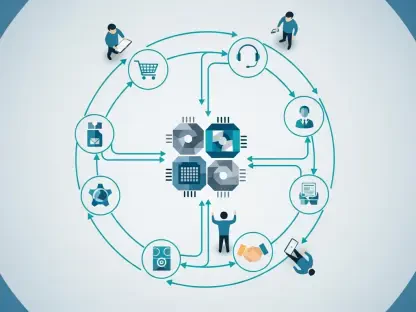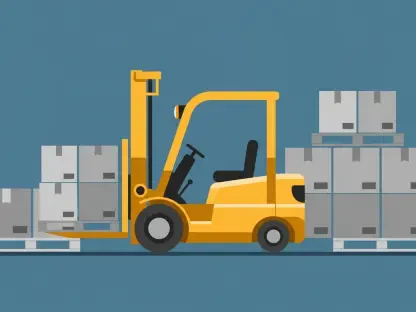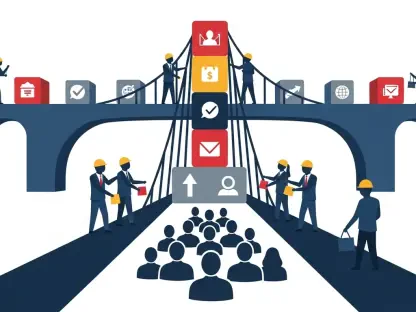The rapid technological advancements in financial services have highlighted the challenges posed by outdated legacy systems, especially in private market firms. These firms are increasingly seeking ways to modernize their processes to stay competitive and scalable. Gareth Lewis, Founder and Co-Chief Executive of Delio, delves into the potential of middleware-like solutions to enhance existing systems. By improving distribution, reporting workflows, and establishing a framework for future growth, firms can better meet the evolving demands of the market while maintaining operational control.
The Challenge of Legacy Systems
Current State of Legacy Technology
Legacy systems have served as the foundation for financial infrastructure over the years, but their ability to keep up with the latest technological advancements is waning. In a fast-paced industry where new innovations constantly emerge, replacing these systems can feel like a Sisyphean task. Modern technology in financial services evolves rapidly, causing older systems to become obsolete at an increasing rate. This results in firms falling into a cycle of perpetual updates and patchwork fixes, only to find themselves needing more solutions soon after.
The challenge of managing these legacy systems is compounded by the blend of outdated point solutions and the manual processes that firms often resort to. This reliance on antiquated technology and labor-intensive practices reduces operational efficiency, scalability, and the ability to respond swiftly to market changes. Despite the evident need for modernization, the complexity and critical nature of these systems make a complete overhaul daunting, leading firms to seek alternative approaches to upgrade their infrastructure.
The Heavy Dependence on Legacy Systems
The Financial Conduct Authority (FCA) underscores the extent of this issue, reporting that a significant majority of financial service companies in the UK are heavily reliant on legacy technology. According to the FCA, 92% of these companies continue to depend on legacy systems, with 78% of their data housed in on-premises infrastructure. This high dependence is particularly critical as private market firms project robust growth, with estimations indicating a valuation of $4 trillion.
The existing infrastructure used by manufacturers, distributors, and service providers must evolve to support this anticipated growth. As firms grow, they require a technology foundation that can deliver enhanced digital experiences while maintaining control over operations. This dual necessity highlights the pressing need for a scalable technology infrastructure that can support modern business requirements without compromising the integrity and performance of core systems.
Strategic Integration Over Replacement
Modernization Challenges
Modernizing legacy systems within private market firms is no small feat. The scale and sophistication of current infrastructure often make outright replacements impractical and prohibitively expensive. For instance, 55% of financial institutions in the UK consider legacy systems a significant hurdle to digital transformation. The costs associated with such modernization efforts are substantial, with financial institutions investing $36.7 billion in 2022 alone to update these systems.
Looking ahead, this expenditure is expected to escalate, with projections indicating that modernization costs could rise to $57.1 billion over the coming years. Firms must therefore navigate these financial pressures while addressing the critical need to modernize. The deeply embedded nature of legacy investment accounting systems adds another layer of complexity. While these systems are reliable, they struggle with flexibility and meeting the demands of today’s investors, who expect greater visibility into their portfolios and an enhanced user experience.
Benefits of Middleware Solutions
Given the high costs and complexities of full system overhauls, firms are increasingly adopting innovative overlay solutions to enhance the functionality and efficiency of their existing systems. Middleware solutions offer a practical alternative that allows firms to adapt to modern demands with minimal operational disruption. These solutions work by overlaying existing legacy systems, effectively bridging the gap between old and new technologies.
Middleware solutions can significantly improve the efficiency and functionality of legacy systems by streamlining processes, centralizing data, and enhancing user interfaces. This approach not only bolsters operational efficiency but also enables firms to meet contemporary compliance requirements and enhance investor experience. Through middleware, firms can achieve a balanced strategy that modernizes their infrastructure incrementally without the need for costly and disruptive overhauls.
Streamlining Reporting and Data Analytics
Inefficiencies in Data Management
Initially designed to serve as centralized data repositories, legacy core systems have become increasingly compartmentalized, resulting in inefficiencies and heightened regulatory risks. Over the years, these systems have fragmented into disparate units, operating in various formats across different service lines and geographic bases. This fragmentation complicates data management and increases the potential for errors and compliance breaches.
The regulatory landscape, particularly stringent in financial services, adds another layer of complexity to managing these outdated systems. Firms must ensure data accuracy and consistency across various platforms, a task that is inherently difficult with legacy systems. The pressures of regulatory compliance and the risk of significant penalties for non-compliance make the need for streamlined, efficient data management processes even more urgent.
Transition to Unified Systems
Point solutions like Virtual Data Rooms (VDRs), portals, spreadsheets, and repurposed CRM tools can solve specific problems but often perform poorly in integrated environments. As firms expand their distribution bases, they require a more unified operating system approach to centralize data, automate workflows, and reduce manual processes. This transition is critical for delivering consistent reporting and analytics, which are vital for informed decision-making.
Adopting a unified system can bridge the information gaps, thereby enhancing insights and reducing the reliance on legacy point solutions. Such systems offer the advantage of centralized data management, improving the accuracy and efficiency of reporting and analytics. This shift allows asset and wealth managers, fund administrators, and infrastructure providers to redirect their focus on growth and strategic initiatives, rather than being bogged down by administrative tasks.
Future-Proofing Operations
Barriers to Adaptability
Legacy systems present a formidable barrier to long-term adaptability for private investment firms. As market demands and regulatory environments evolve, firms require systems that can scale and integrate seamlessly with new technologies. The rigidity of legacy systems hinders this adaptability, making it difficult for firms to stay responsive to market shifts. This lack of flexibility can result in missed opportunities and slow responses to regulatory changes, ultimately affecting competitiveness.
Ensuring that systems can adapt to evolving market conditions is crucial for maintaining a competitive edge. Firms need solutions that not only address current needs but can also evolve with future requirements. The challenge lies in finding the right balance between maintaining operational stability and implementing new technologies that can enhance adaptability and scalability.
Moving Toward Modern Solutions
To bridge the gap between legacy systems and modern requirements, connectivity solutions are essential. These solutions enable firms to integrate existing applications with the necessary digital infrastructure, allowing a gradual transition from outdated processes. This step-by-step modernization approach offers a lower-risk pathway, reducing the likelihood of operational disruptions. By implementing these connectivity solutions, firms can gradually decrease their reliance on legacy systems, thereby future-proofing their operations.
This gradual transition allows firms to maintain operational continuity while incrementally modernizing their infrastructure. Each step reduces risks and dependencies on obsolete technologies, paving the way for more agile and scalable systems. This approach not only ensures compliance and operational efficiency but also lays the foundation for sustained growth and competitiveness in the dynamic private market landscape.
Managing Legacy Systems Successfully
Adoption of Next-Generation Platforms
The adoption of contemporary, next-generation platforms provides private market firms with a sustainable solution to the challenges posed by legacy systems. These platforms minimize dependency on outdated infrastructure and incorporate flexible workflow solutions. By adopting middleware-like solutions, firms can enhance control and compliance, which are critical in today’s stringent regulatory environment, while establishing a foundation for future growth. These solutions offer a comprehensive one-stop solution that addresses the dual need for modernization and continuity.
Implementing next-generation platforms not only addresses immediate inefficiencies but also ensures that systems are adaptable to future demands. By focusing on modular upgrades and integrations, firms can transition smoothly without compromising on operational integrity. This strategy offers a pragmatic approach to modernization, aligning with the long-term goals of maintaining performance while evolving with market trends.
Embracing Integration and Scalability
The rapid advancements in technology within the financial services sector have underscored the problems caused by outdated legacy systems, particularly for private market firms. These firms are actively looking for ways to modernize their processes to remain competitive and scalable in an ever-evolving market. Gareth Lewis, Founder and Co-Chief Executive of Delio, explores the possibilities offered by middleware-like solutions to upgrade existing systems. Such solutions can significantly enhance the efficiency of distribution and reporting workflows while also setting up a solid foundation for future growth. By integrating these innovative approaches, firms can better meet the dynamic demands of the market, all while maintaining a high level of operational control. These modernizations not only address current inefficiencies but also prepare these firms for potential future challenges, enabling them to adapt swiftly to industry changes. Ultimately, this strategic move is essential for private market firms aiming to thrive in a technologically advanced financial landscape.









